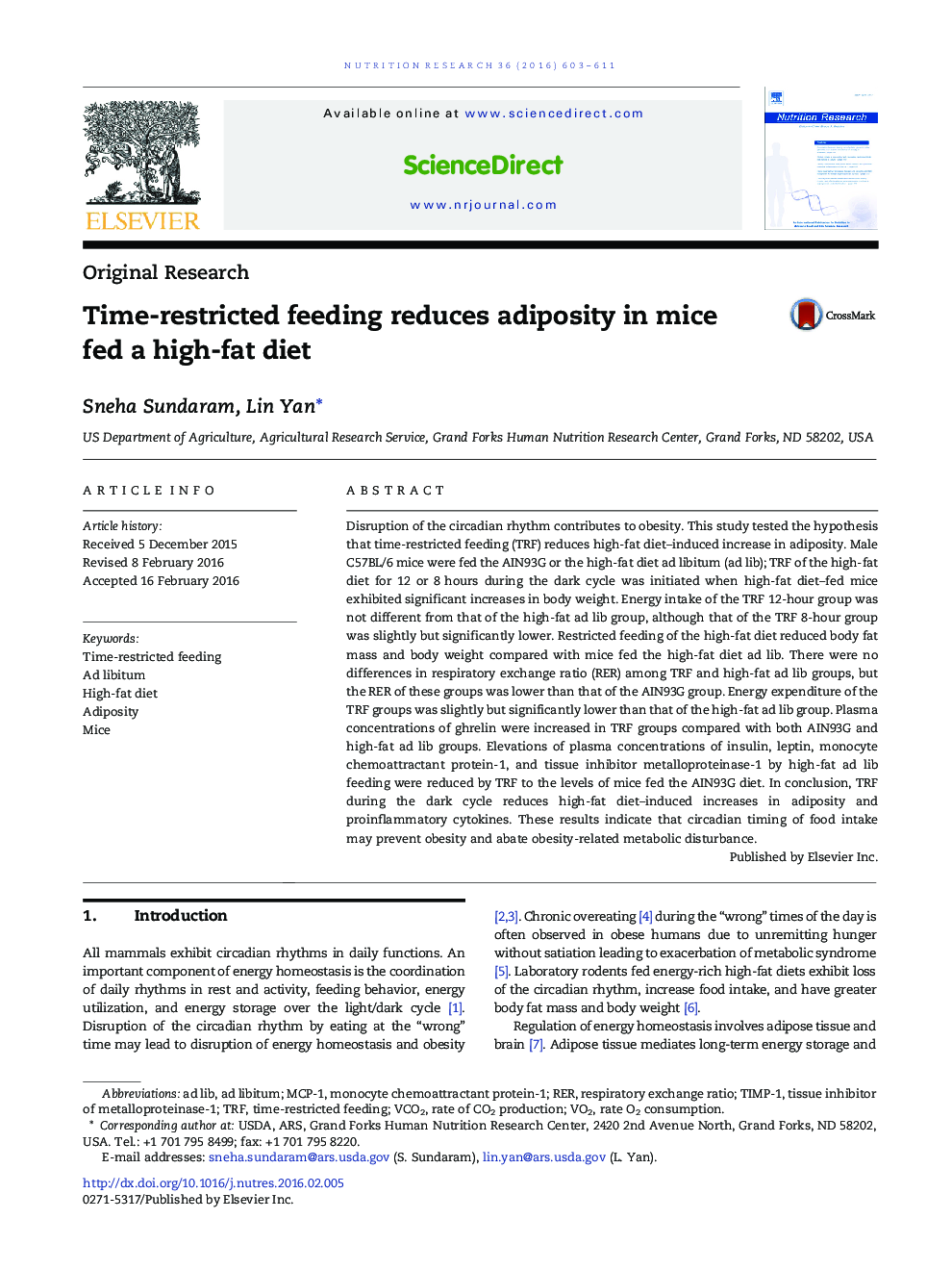| کد مقاله | کد نشریه | سال انتشار | مقاله انگلیسی | نسخه تمام متن |
|---|---|---|---|---|
| 2808894 | 1157980 | 2016 | 9 صفحه PDF | دانلود رایگان |
Disruption of the circadian rhythm contributes to obesity. This study tested the hypothesis that time-restricted feeding (TRF) reduces high-fat diet–induced increase in adiposity. Male C57BL/6 mice were fed the AIN93G or the high-fat diet ad libitum (ad lib); TRF of the high-fat diet for 12 or 8 hours during the dark cycle was initiated when high-fat diet–fed mice exhibited significant increases in body weight. Energy intake of the TRF 12-hour group was not different from that of the high-fat ad lib group, although that of the TRF 8-hour group was slightly but significantly lower. Restricted feeding of the high-fat diet reduced body fat mass and body weight compared with mice fed the high-fat diet ad lib. There were no differences in respiratory exchange ratio (RER) among TRF and high-fat ad lib groups, but the RER of these groups was lower than that of the AIN93G group. Energy expenditure of the TRF groups was slightly but significantly lower than that of the high-fat ad lib group. Plasma concentrations of ghrelin were increased in TRF groups compared with both AIN93G and high-fat ad lib groups. Elevations of plasma concentrations of insulin, leptin, monocyte chemoattractant protein-1, and tissue inhibitor metalloproteinase-1 by high-fat ad lib feeding were reduced by TRF to the levels of mice fed the AIN93G diet. In conclusion, TRF during the dark cycle reduces high-fat diet–induced increases in adiposity and proinflammatory cytokines. These results indicate that circadian timing of food intake may prevent obesity and abate obesity-related metabolic disturbance.
Journal: Nutrition Research - Volume 36, Issue 6, June 2016, Pages 603–611
